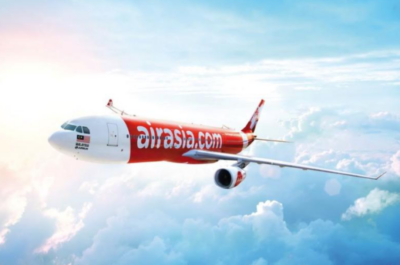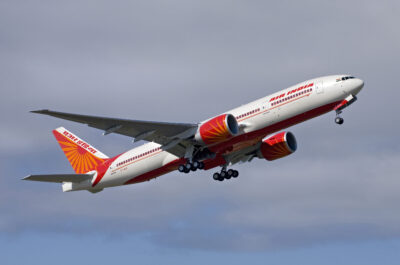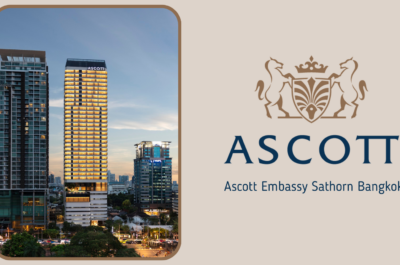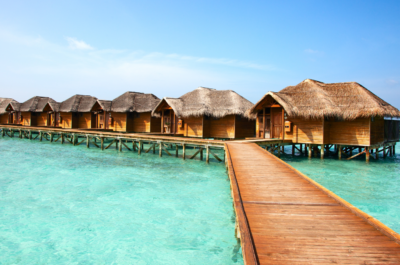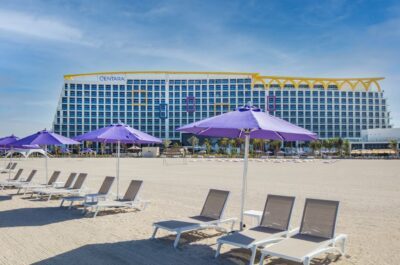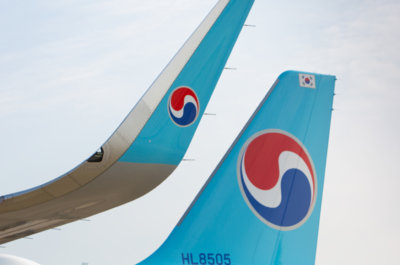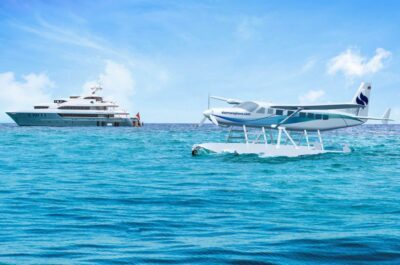REPORT – PATTAYA – IT&CMA 2006: Four pilot plans for the recovery of the Indonesian tourism industry have been laid out by the Indonesian Ministry of Culture and Tourism. Strengthening Indonesia’s image after the catastrophes of 2005 and 2006, promote new…
REPORT – PATTAYA – IT&CMA 2006: Four pilot plans for the recovery of the Indonesian tourism industry have been laid out by the Indonesian Ministry of Culture and Tourism. Strengthening Indonesia’s image after the catastrophes of 2005 and 2006, promote new destinations, attract new markets and simplify travel to Indonesia are the four actions plans.
Since Bali’s bombing at the end of 2005, Indonesia’s tourism moves into a zone of turbulences. In May 2006, an earthquake caused damages to parts of Central Java (Bantul area) as well as parts of the ancient city of Yogyakarta. In July, a tsunami damaged on a limited scale the Pangandaran coastal area in the southern part of West Java.
The Ministry of Culture and Tourism revised consequently its tourism targets for the year and expects now to welcome up to 5.5 million foreign tourists. Growth should resume in 2007 with a target of six million foreign visitors. Indonesia aims in the long term to double the number of tourists to 10 million (optimistic forecast) around 2009 as well as tourism revenues to US$ 10 billion.
Annual Budget
The annual budget of the Ministry of Culture and tourism represents a total of US$ 10.8 million (Rp. 101 billion). However, two additional funds have been set up by the government:
- A Bali recovery fund totalling Rp. 67 billion (US$ 7.2 million) has been affected to the island
- A second fund for tourism recovery has recently been made available, representing an additional Rp. 60 billion (US$ 6.45 million)to the current budget of the Ministry
The funds will be focused on creating an image of Indonesian tourism.
The Ministry of Culture and Tourism helped to set up two Media Crisis Centres in Yogyakarta and Pangandaran, which provides data, figures and information on the recovery in the affected areas.
Image Strengthening
Indonesia will continue to be present in major travel shows around the world, including the Pata Travel Mart, World Travel Market in London, ITB in Berlin, JATA in Tokyo and the Arab Travel Mart 2007 in Dubai.
The ATIF (Asean Tourism Investment Forum) will be hosted in November in Yogyakarta and will be the first large international convention post-earthquake. Over 300 participants from the ten Asean countries are expected.
Indonesia plans to host a Tourism Summit in January 2007 and attract 700 tourism stakeholders, in an effort to boost Indonesia’s flagging tourism image and to attract investments, said Coordinating Minister for Welfare, Aburizal Bakrie. Another important event for the tourism industry will be the PATA Travel Mart in Bali in September 2007. Asia’s premier international travel show expects to host over 300 sellers and 300 buyers from 40 different countries.
The Ministry will look for new thematic tourism years to highlight various aspects of Indonesia’s life and culture.
Promoting new Destinations
Indonesia wants to emphasize promotions on new destinations from 2007 in a bid to achieve its 10 million tourists’ target. Beside highlighting traditional destinations like Jakarta, Bali, Yogyakarta or East Java, the Ministry will also push West Sumatra, North Sulawesi, South Sulawesi and the Western and Eastern Lesser Sunda islands.
New Markets Targeted
The Indonesian Government recently approved the extension of the visa-on-arrival to another 16 countries. Now, 52 countries can obtain a visa on arrival at the border.
The Ministry of Culture and Tourism look to expand its tourism to new inbound markets. Priority is given to India, the Middle East as well as Mainland China. For the Middle East, Bahrain and Iran are now among the countries which can receive a visa on arrival.
The Ministry of Culture and Tourism signed on July 1st a marketing agreement with Singapore Airlines. Under the MoU, Singapore Airlines and the Ministry will develop and promote cooperation activities to promote Indonesia in overseas markets. Marketing campaigns will be conducted by Singapore Airlines and SilkAir in America and selected countries in Europe and Asia, especially emerging inbound markets like China and India. Singapore Airlines and the Ministry contribute each to a total value of US$200,000 for activities funding.
Tourist Arrivals
In 2005, Indonesia received slightly over five million foreign travellers. In 2005, Indonesian tourism was on the verge to achieve its best-ever tourism year despite the tsunami in Aceh at the end of 2004. However, the bombing in Bali in October and fears of bird flue took their toll on tourism arrivals. Total foreign arrivals declined by 6% between 2004 and 2005. Domestic tourism however continued to grow from 2004 to 2005. Estimated figures put at 112.7 million the number of domestic travellers last year, up by 1.25% over 2004. Number of domestic travels reached 213.3 million in 2005, up by 5.2%.
Unfortunately, the year 2006 has been also affected by various negative events like natural catastrophes. Following the earthquake in Yogyakarta in June 2006, the government has revised its target, expecting now between 5 and 5.5 million visitors. The government hopes now that tourism will fully recover by 2007 and reach its target of six million international visitors.
Most of Indonesia’s major incoming markets recorded a decline in 2005. However, Indonesia was also successful to attract more visitors from India, Malaysia, the Philippines, Thailand, South Korea and China PRC last year. Visa-on-arrival facilities and additional flight frequencies for China, India and Korea had a positive effect on arrivals from both countries. Malaysia’s performance was in majority due to lower fares with the introduction of air services between both countries by low cost carriers. In Europe, the UK was the most dynamic market thanks to its dynamic economy and a strong currency. The Netherlands, one of Indonesia’s top incoming market in Europe, remained stable. In the Pacific area, arrivals from New Zealand citizens almost doubled between 2004 and 2005.
Where do international tourists go?
Despite the bombing at the end of last year in Bali, the “Island of the Gods” remains Indonesia’s favourite destination for foreign visitors as its market share reached 29.1% of all arrivals to the country. The island received last year 1.45 million visitors, down by 4.67%. Bali is by far the number one destination for European travellers (52.1% of all arrivals to Indonesia), Japan (63.6%), Australia (62.3%) and Taiwan (60.9%).
Jakarta was Indonesia’s second most visited destination in 2005 with 1,105,072 arrivals recorded at Soekarno-Hatta International Airport and up by almost 10% compared to 2004. Indonesia’s third most visited destination is Batam island, in the Riau Archipelago province. The island is only 45 minutes by ferry from Singapore and welcomed in 2005 slightly over a million visitors.
Among the fastest growing destination, West Sumatra saw the number of foreign tourists increasing by 39% thanks to the development of low cost flights out of Padang International Airport. Lombok Island, near Bali, saw the number of its foreign visitors surging by 29%. Foreign arrivals at Entikong in West Kalimantan (Borneo Island) jumped by 26%.
Tourism Revenues
In 2005, Indonesia recorded US$ 4.52 billion in international tourism revenues, down by 5.75% from 2004. Spending per visit however increased slightly to US$ 904, a 0.2% growth if compared to US$ 901.6 in 2004. Revenues from domestic tourism grew in 2005 by 8.1% reaching a record of Rp 77.5 billion (approximately US$ 8.4 billion).
In 2004, tourism was the second largest source of foreign exchange for Indonesia behind oil and gas revenues. Tourism represented 6.71% of all exports in 2004 and 5% of the country’s GDP.
Who needs visa to Indonesia?
Most of Indonesia’s travellers must get a visa to enter the country, which is directly delivered upon arrival to citizens of 52 countries.
- Countries which does not need a visa for a stay not exceeding 30 consecutive days: Brunei Darussalam, Chile, Hong Kong SAR, Macau SAR, Malaysia, Morocco, Peru, the Philippines, Singapore, Thailand and Vietnam.
- Countries which are eligible for a Visa-on-Arrival (VOA) facility: From less than 25 countries in 2004, the list included 36 countries in 2005 and grew up to 52 countries this year. VOA countries can get directly their visa at all major international airports as well as international seaports.
|
1 |
Argentina |
27 |
Kuwait |
|
2 |
Australia |
28 |
Laos |
|
3 |
Austria |
29 |
Liechtenstein |
|
4 |
Bahrain |
30 |
Luxemburg |
|
5 |
Belgium |
31 |
Maldives |
|
6 |
Brazil |
32 |
Malta |
|
7 |
Bulgaria |
33 |
Mexico |
|
8 |
Cambodia |
34 |
Monaco |
|
9 |
Canada |
35 |
Netherlands |
|
10 |
China PRC |
36 |
New Zealand |
|
11 |
Cyprus |
37 |
Norway |
|
12 |
Denmark |
38 |
Oman |
|
13 |
Egypt |
39 |
Poland |
|
14 |
Estonia |
40 |
Portugal |
|
15 |
Finland |
41 |
Qatar |
|
16 |
France |
42 |
Russia |
|
17 |
Germany |
43 |
Saudi Arabia |
|
18 |
Greece |
44 |
South Africa |
|
19 |
Hungary |
45 |
Spain |
|
20 |
Iceland |
46 |
Surinam |
|
21 |
India |
47 |
Sweden |
|
22 |
Iran |
48 |
Switzerland |
|
23 |
Ireland |
49 |
Taiwan |
|
24 |
Italy |
50 |
UAE |
|
25 |
Japan |
51 |
United Kingdom |
|
26 |
Korea (South) |
52 |
USA |
- For other countries, it is still necessary to obtain a visa at the nearest Indonesian embassy.
The passport must have a validity of six months minimum. The cost for a single visa is fixed at US$ 10 for a maximum period of seven days/six nights or US$ 25 for a maximum period of 30 days. A charge of US$20 per day will be imposed for overstaying. It is advised to pay directly in US dollars upon arrival in the country. The Indonesian government currently studies the possibility of giving free visas to 40 countries in a bid to stimulate tourism.
Theodore is the Co-Founder and Managing Editor of TravelDailyNews Media Network; his responsibilities include business development and planning for TravelDailyNews long-term opportunities.

































